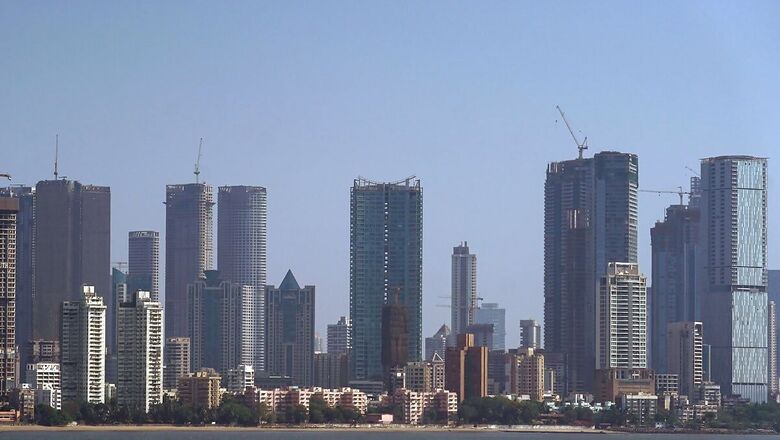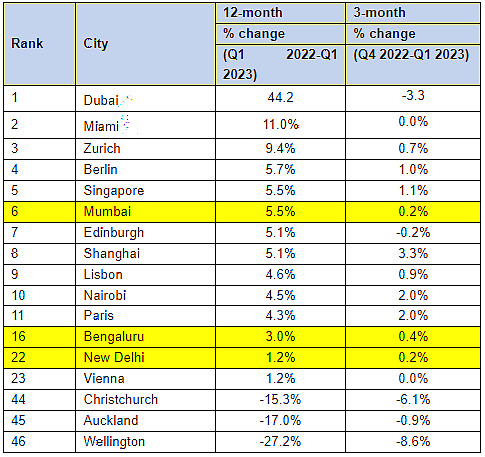
views
Knight Frank India, a leading international property consultancy in the country, in its report ‘Prime Global Cities Index Q1 2023’ noted that the top three Indian cities-Mumbai, Bengaluru and New Delhi have registered an increase in average annual prices in Q1 2023. Mumbai moved up from the 38th rank in Q1 2022 to the 06th rank in Q1 2023 based on the annual growth in high-end or prime properties.
According to the report, Bengaluru and New Delhi also witnessed an upward movement in index ranking to 16th and 22nd ranks from their previous 37th and 39th ranks respectively in Q1 2022. The rise in average prices in Mumbai was recorded at 5.5% year-on-year (YoY), while it was 3.0% YoY in Bengaluru, and 1.2% YoY in New Delhi, compared to Q1 2022.
Dubai clinched the top position globally with an increase of 44.2% in prime residential properties values.
The Prime Global Cities Index is a valuation-based index tracking the movement of prime residential prices across 46 cities worldwide. The index tracks nominal prices in local currency.
The Knight Frank Prime Global Cities Index Q1 2023 (Ranked by annual % Change)

Mumbai’s significant rise on the international index was largely due to the rise in demand in the city. While the demand has been strong for all segments, Knight Frank India said it has seen a rise in the sale of higher value products.
Shishir Baijal, chairman and MD, Knight Frank India, said, “The Indian economy stood out with steady performance despite concerns around global growth and inflation that marked most of 2022.”
“However, the Indian real estate markets displayed continued momentum in demand, amid concerns of an inflationary environment, and weathered a steep rise in home loan rates over the past 12 months. Particularly, we have seen demand for prime residential property being maintained largely due to three factors, firstly these set of consumers are less dependent on mortgage support; secondly, the continuous growth in economy has led to an increase and stability in income and lastly the prolonged trend of buying larger homes,” Baijal added.
The Index fell by 0.4% in the 12 months to the end of March this year, the first fall since 2009. This marks a sharp reversal from a peak of 10.1% growth in the fourth quarter of 2021. Dubai observed the fastest rise in prime prices with 44.2% YoY (Q1 2022- Q1 2023).
The report further cited that at the top of the table, Dubai’s 44% annual growth remains a substantial outlier, with second place Miami as the only other city to reach double-digit growth (11%). Zurich (9.4%), Berlin (5.7%), and Singapore (5.5%) complete the top five markets – pointing to the resilience of wealth and, in Berlin’s case, investment hubs.
Dubai’s 149% growth through the pandemic (March 2020 to date) reflects a market undergoing significant structural change. Miami saw the second strongest growth over the same period, but at only 59% merely serving to highlight Dubai’s exceptional market transformation.
The outlook
While the Federal Reserve and other central banks may be closing in on peak rates, it is likely that even prime housing markets will experience continued downward pressure on prices for the next few quarters. That said, it is unlikely we will see a correction similar in scale to that seen during the global financial crisis, when the overall PGCI index fell 8.2% from peak to trough in 2009.
Early signs indicate that some markets saw improvements, 46% of markets saw quarterly prices fall through the second half of 2022, but only 28% did in the first quarter of this year, the lowest number since the first quarter of 2021.




















Comments
0 comment